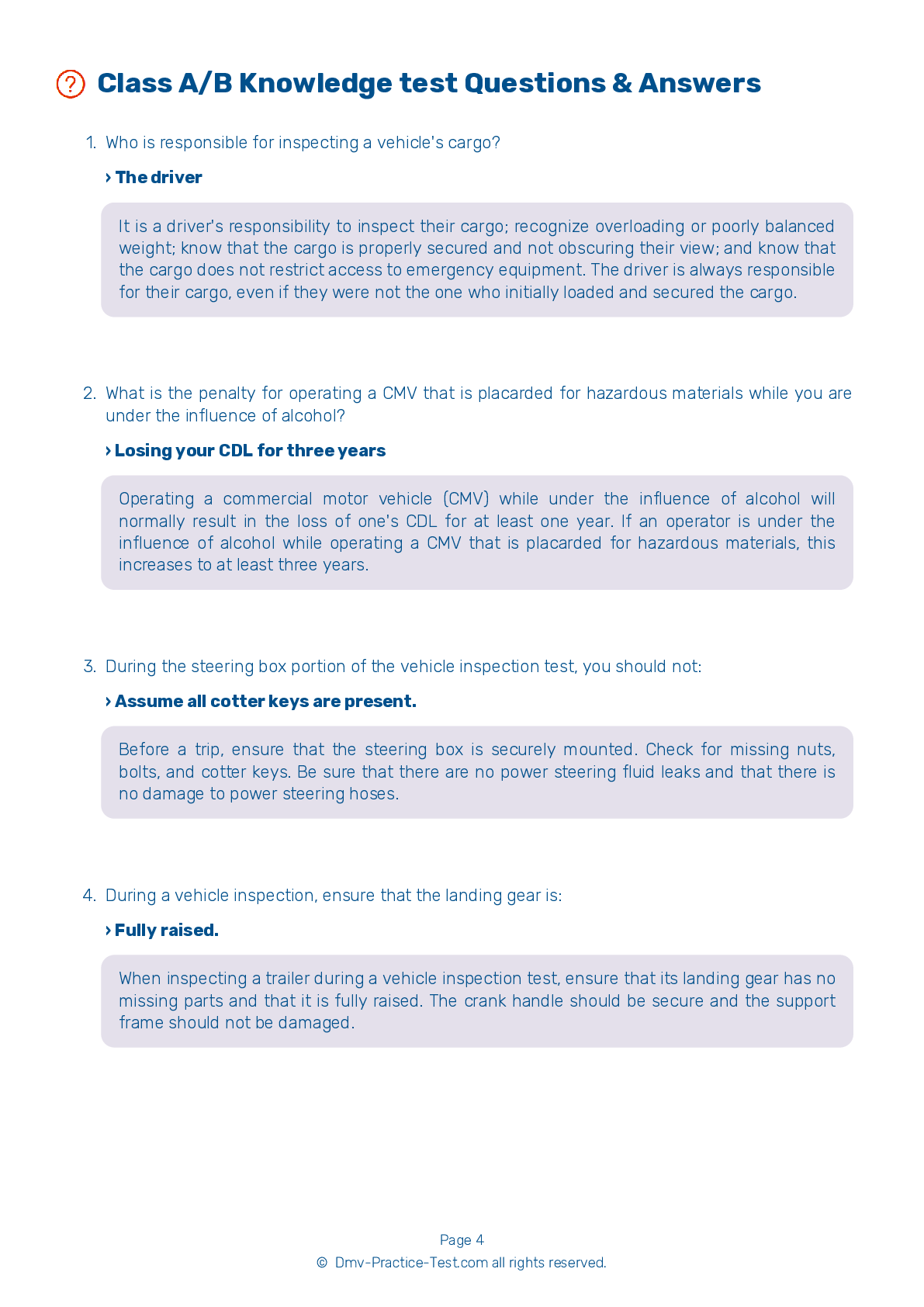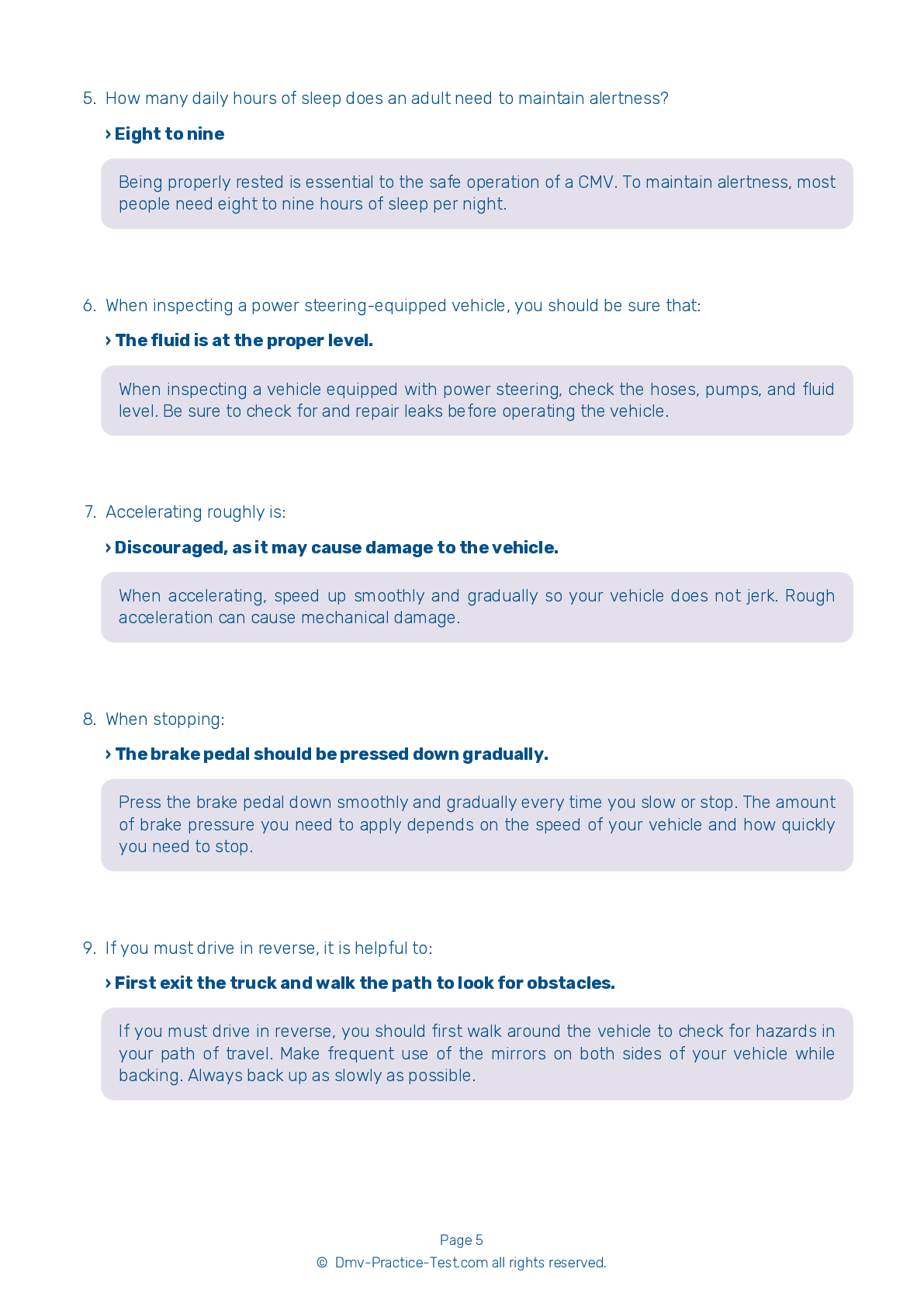Air Brakes Endorsement Test | Texas 2025 #1 Page 2 of 4
Train for FREE online with our Texas CDL air brake test. The official exam test consists of several obligatory parts, with all of them checking your knowledge of different blocks of road rules. If you need to obtain a TX Class A/Class B driver license in 2025, practice as much as possible. Free sample tests published on our website will help you check and improve your knowledge and boost your grades. Please bear in mind that the requirements for CDL may vary from state to state.
7 . Which of the following is not a part of an air brake system?
Air brakes consists of three separate braking systems: the service brake system, the parking brake system, and the emergency brake system.
8 . Friction inside a brake drum is caused when the brake shoes and linings:
Friction inside a brake drum is caused when the brake shoes and linings push against the inside of the drum. The friction in the drums will slow and stop the vehicle.
9 . During a static leakage test, the maximum leakage rate for a single vehicle with air brakes is ____ in one minute.
When performing a static leakage test on a single vehicle with air brakes, the leakage rate should be no more than 2 psi in a minute. If air leaks from the air brake system at a quicker rate, the vehicle should not be driven because something likely needs to be repaired.
10 . A dual air brake system:
A dual air brake system has two separate air brake systems that use a single set of brake controls. One system typically operates the regular brakes on the rear axle or axles. The other system operates the regular brakes on the front axle.
11 . During a static leakage test, the maximum leakage rate for a double combination vehicle is:
When performing a static leakage test on a double combination vehicle with air brakes, the leakage rate should be no more than 3 psi in one minute. If air leaks from the air brake system at a quicker rate, the vehicle should not be driven because something likely needs to be repaired.
12 . To ensure normal stopping power, drivers of vehicles equipped with a front brake limiting valve should:
Some pre-1975 vehicles have a front brake limiting valve, which has "normal" and "slippery" settings. The idea behind these valves was to limit the air pressure available to the front brakes when driving on slippery surfaces, and thereby reduce the danger of a front-wheel skid. Studies have found that this is not actually a concern, so if your vehicle has a front brake limiting valve, leave it in the "normal" position.
See the exact questions that will be on the 2025 Texas DMV exam.
99.2% of people who use the cheat sheet pass the FIRST TIME
Lillian MCcranie explains how our CDL study guide was helpful in passing the exam and recommends it to everyone.
Cameron tells us how he purchased the CDL exam, and found it to be a useful tool which helped him pass the exam and find a job.



